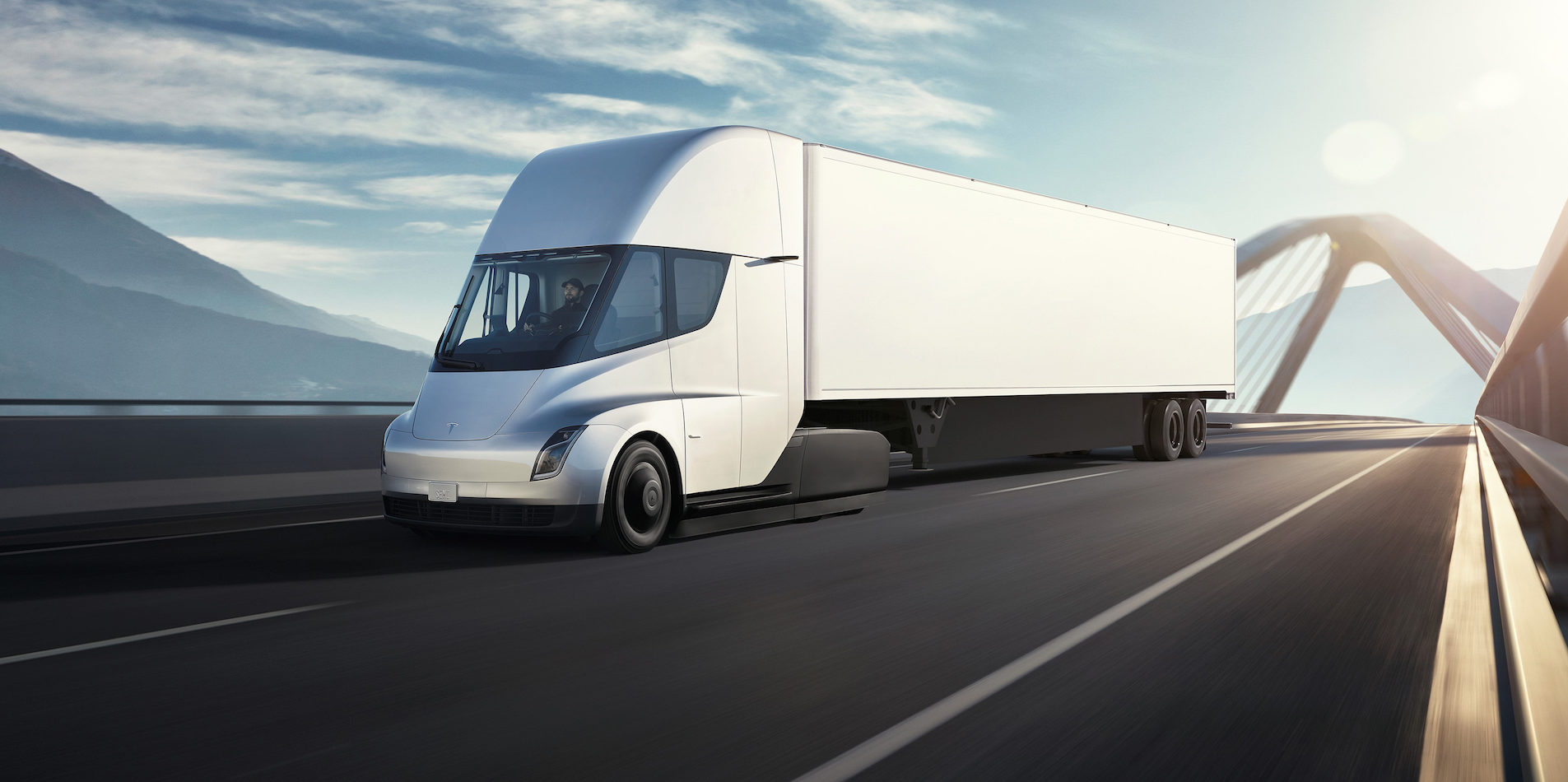
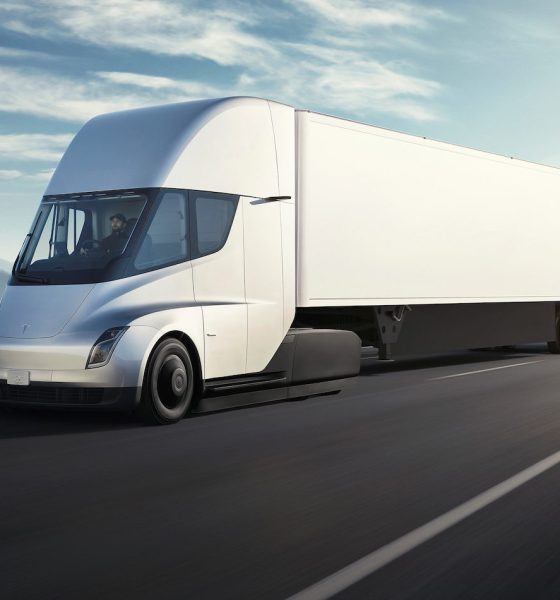
News
Tesla Semi faces new wave of skepticism from diesel veterans
There is very little doubt that the Model S, Model X, and Model 3 have disrupted their respective segments since they were released. Tesla aims to accomplish the same thing with its all-electric Semi truck, but the vehicle’s target is a lot more ambitious — it aims to disrupt the trucking industry.
The trucking industry is vast, and it is still growing. Long-haul trucking stands is the lifeblood of the US economy, handling the transportation of up to 71% of food, retail goods, construction supplies, and other cargo delivered every day. The American Trucking Associations’ American Trucking Trends 2018 report revealed that the US trucking industry generated $700.3 billion in economic activity in 2017, representing a 3.5% increase compared to 2016 when the trucking market generated $676.6 billion. This is the market that Tesla is aiming to tap into with the Semi.
One of the Tesla Semi’s main selling points is that it’s an environmentally-friendly vehicle. Being all-electric, the Semi is a zero-emissions truck. This is an advantage over conventional diesel trucks, which are a significant source of air pollution in the United States. According to the Environmental Protection Agency, greenhouse gases from medium and heavy-duty trucks were found to have increased by 85% between 1990 to 2016, accounting for about 23% of carbon emissions from transportation in 2016. This is despite the fact that diesel engines are getting steadily cleaner. The EPA estimates that emissions from current engines are about 85% lower than before 2007 when the US rolled out new standards.
The Tesla Semi has several features that make it a viable alternative to diesel-powered long-haulers, from its four Model 3-derived electric motors, its comparable Class 8 hauling capacity, and its superior speed. That said, it appears that America’s diesel veterans would not give up without a fight. In a statement to Bloomberg, Jon Mills, a spokesman for engine maker Cummins Inc. noted that electric trucks have a long way to go before they could be considered competition for diesel trucks.
“Right now, we don’t think it’s viable. Electric trucks are more viable where you have shorter routes, less loads and you’re able to recharge,” he said.
Cummins Inc. is one of America’s premier engine-makers, supplying engines for consumer trucks, fire engines, and heavy-duty long-haulers. Most of the company’s engines run on diesel, though they are also making some that operate on natural gas. Mills noted that Cummins is developing electric motors as well, but the company does not expect a lot of demand for them anytime soon.
Mills did admit that electric trucks would contribute to reducing pollution. Nevertheless, the Cummins Inc. spokesman noted that the trucking industry is likely not ready to switch to electric, mainly since vehicles like the Tesla Semi have limited range. Considering that some truck drivers are paid by the mile, they would likely lose money while waiting for their vehicles’ batteries to recharge.
“Diesel will be the primary option for heavy duty trucking markets, long haul especially, for a decade or more,” Mills said.
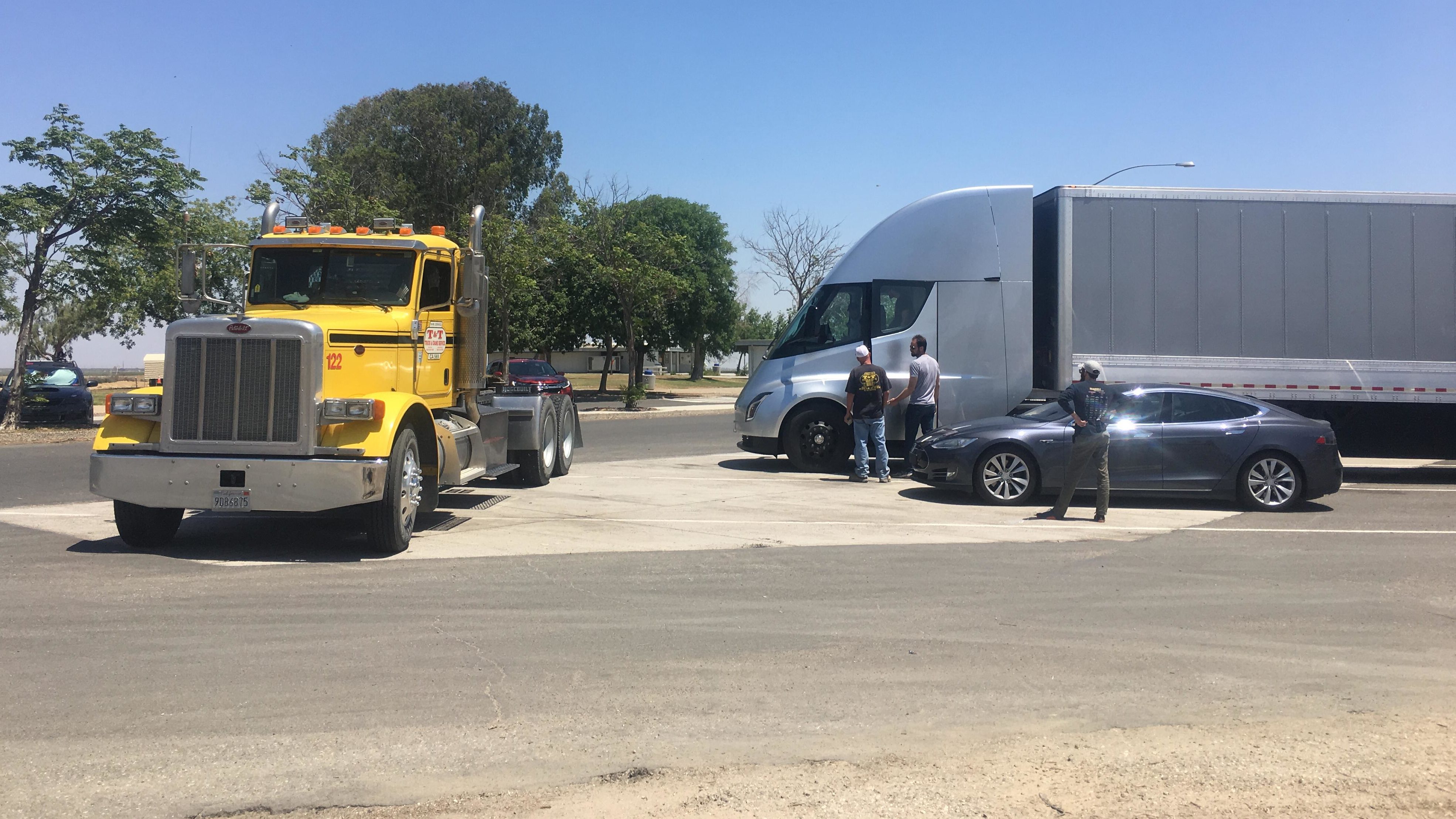
Elon Musk wants to initiate the transition sooner. When unveiling the Tesla Semi’s specs, Musk noted that the electric long-hauler would be cheaper to operate than comparable diesel-powered trucks. Musk noted that the Semi could cost operators $1.26 per mile to run, less than the standard $1.51 per mile that diesel-powered vehicles cost. That said, Allen Schaeffer, executive director of the Diesel Technology Forum trade group, is skeptical of Musk’s claims, noting that there is little need for a new entrant in the shipping industry.
“It’s easy if you’re just coming into this market to say ‘they’re $1.50 per mile and we can do it for $1.20. But where’s the proof? I haven’t seen it. Diesel is the benchmark for energy efficiency. Diesel dominates the entire sector,” he said.
Amidst continued reservations from veterans in the trucking industry, Tesla is nonetheless pushing through with further development of the Semi. The company has been conducting real-world tests of the Semi since the vehicle was unveiled, and during the Q2 2018 earnings call, Elon Musk noted that improvements to the truck are being made. Thus, when the Tesla Semi enters production, the long-hauler would be an even more viable alternative to diesel-powered trucks.
“We’ve made significant improvements to the design since the unveiling that we had, and it’s really even better than what we talked about,” Musk said.

Elon Musk
Tesla’s Elon Musk gives timeframe for FSD’s release in UAE
Provided that Musk’s timeframe proves accurate, FSD would be able to start saturating the Middle East, starting with the UAE, next year.
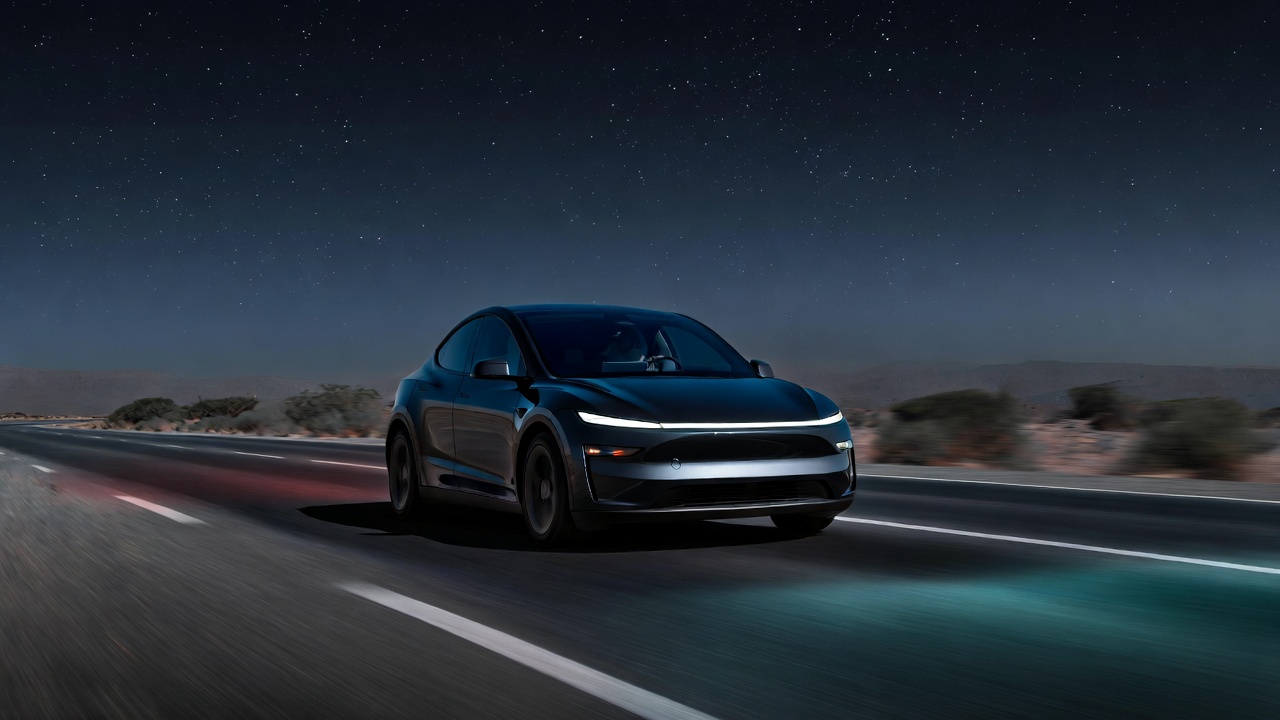
Tesla CEO Elon Musk stated on Monday that Full Self-Driving (Supervised) could launch in the United Arab Emirates (UAE) as soon as January 2026.
Provided that Musk’s timeframe proves accurate, FSD would be able to start saturating the Middle East, starting with the UAE, next year.
Musk’s estimate
In a post on X, UAE-based political analyst Ahmed Sharif Al Amiri asked Musk when FSD would arrive in the country, quoting an earlier post where the CEO encouraged users to try out FSD for themselves. Musk responded directly to the analyst’s inquiry.
“Hopefully, next month,” Musk wrote. The exchange attracted a lot of attention, with numerous X users sharing their excitement at the idea of FSD being brought to a new country. FSD (Supervised), after all, would likely allow hands-off highway driving, urban navigation, and parking under driver oversight in traffic-heavy cities such as Dubai and Abu Dhabi.
Musk’s comments about FSD’s arrival in the UAE were posted following his visit to the Middle Eastern country. Over the weekend, images were shared online of Musk meeting with UAE Defense Minister, Deputy Prime Minister, and Dubai Crown Prince HH Sheikh Hamdan bin Mohammed. Musk also posted a supportive message about the country, posting “UAE rocks!” on X.
FSD recognition
FSD has been getting quite a lot of support from foreign media outlets. FSD (Supervised) earned high marks from Germany’s largest car magazine, Auto Bild, during a test in Berlin’s challenging urban environment. The demonstration highlighted the system’s ability to handle dense traffic, construction sites, pedestrian crossings, and narrow streets with smooth, confident decision-making.
Journalist Robin Hornig was particularly struck by FSD’s superior perception and tireless attention, stating: “Tesla FSD Supervised sees more than I do. It doesn’t get distracted and never gets tired. I like to think I’m a good driver, but I can’t match this system’s all-around vision. It’s at its best when both work together: my experience and the Tesla’s constant attention.” Only one intervention was needed when the system misread a route, showcasing its maturity while relying on vision-only sensors and over-the-air learning.
News
Tesla quietly flexes FSD’s reliability amid Waymo blackout in San Francisco
“Tesla Robotaxis were unaffected by the SF power outage,” Musk wrote in his post.

Tesla highlighted its Full Self-Driving (Supervised) system’s robustness this week by sharing dashcam footage of a vehicle in FSD navigating pitch-black San Francisco streets during the city’s widespread power outage.
While Waymo’s robotaxis stalled and caused traffic jams, Tesla’s vision-only approach kept operating seamlessly without remote intervention. Elon Musk amplified the clip, highlighting the contrast between the two systems.
Tesla FSD handles total darkness
The @Tesla_AI account posted a video from a Model Y operating on FSD during San Francisco’s blackout. As could be seen in the video, streetlights, traffic signals, and surrounding illumination were completely out, but the vehicle drove confidently and cautiously, just like a proficient human driver.
Musk reposted the clip, adding context to reports of Waymo vehicles struggling in the same conditions. “Tesla Robotaxis were unaffected by the SF power outage,” Musk wrote in his post.
Musk and the Tesla AI team’s posts highlight the idea that FSD operates a lot like any experienced human driver. Since the system does not rely on a variety of sensors and a complicated symphony of factors, vehicles could technically navigate challenging circumstances as they emerge. This definitely seemed to be the case in San Francisco.
Waymo’s blackout struggles
Waymo faced scrutiny after multiple self-driving Jaguar I-PACE taxis stopped functioning during the blackout, blocking lanes, causing traffic jams, and requiring manual retrieval. Videos shared during the power outage showed fleets of Waymo vehicles just stopping in the middle of the road, seemingly confused about what to do when the lights go out.
In a comment, Waymo stated that its vehicles treat nonfunctional signals as four-way stops, but “the sheer scale of the outage led to instances where vehicles remained stationary longer than usual to confirm the state of the affected intersections. This contributed to traffic friction during the height of the congestion.”
A company spokesperson also shared some thoughts about the incidents. “Yesterday’s power outage was a widespread event that caused gridlock across San Francisco, with non-functioning traffic signals and transit disruptions. While the failure of the utility infrastructure was significant, we are committed to ensuring our technology adjusts to traffic flow during such events,” the Waymo spokesperson stated, adding that it is “focused on rapidly integrating the lessons learned from this event, and are committed to earning and maintaining the trust of the communities we serve every day.”
News
Waymo scrutinized after self-driving taxis cause traffic jams during SF blackout
It’s not farfetched to speculate that it would have been a doomsday scenario for Tesla had FSD behaved this way.
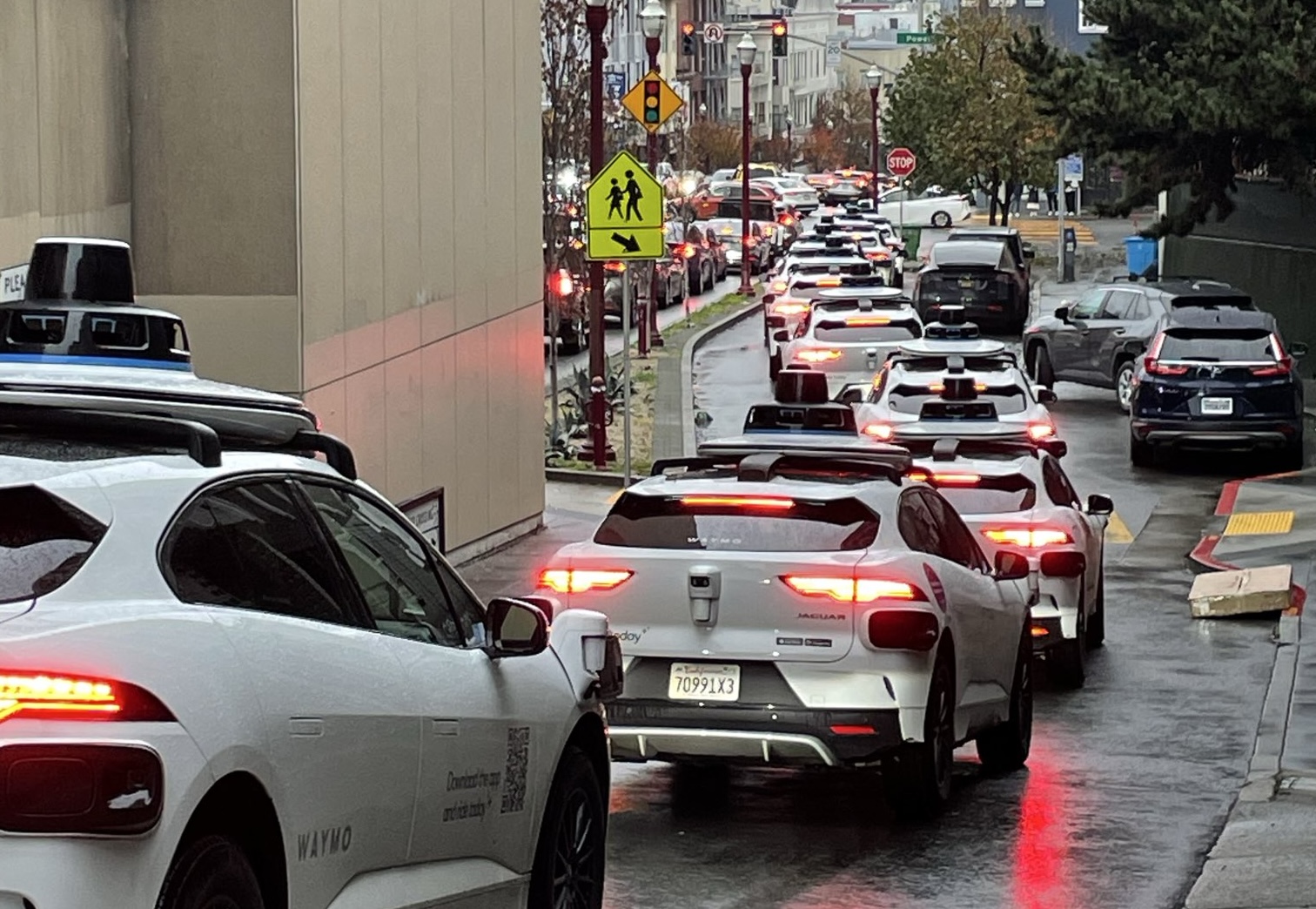
A power outage across San Francisco over the weekend forced numerous Waymo self-driving taxis to stop at darkened intersections and cause traffic blockages in multiple locations across the city. The disruption left riders stranded, frustrated drivers blocked, and city officials stepping in as the Alphabet-owned company temporarily suspended service amid the widespread gridlock.
Needless to say, it would likely have been a doomsday scenario for Tesla had FSD behaved in a similar way, especially if fleets of its robotaxis blocked traffic for numerous drivers.
Power outage halts Waymo fleet
The outage knocked out electricity for tens of thousands of customers, leaving traffic signals dark across large parts of the city, as noted in a report from the New York Times. Waymo vehicles began stopping at intersections and remained stationary for extended periods, seemingly unable to operate. Tow truck operators worked through the night removing immobilized vehicles, while videos circulated online showing Waymos with hazard lights flashing as traffic backed up around them.
Waymo later confirmed that it had paused its Bay Area ride-hailing service after the San Francisco mayor’s office contacted the company about the congestion its vehicles were contributing to. Service began coming back online shortly after 3:30 p.m. local time, though some users still reported being unable to request rides. Waymo maintained that no injuries or accidents were reported during the outage.
Autonomous cars during emergencies
The incident surprised industry observers since autonomous vehicles are designed to function during signal outages and temporary connectivity losses. Waymo stated that its vehicles treat nonfunctional signals as four-way stops, but “the sheer scale of the outage led to instances where vehicles remained stationary longer than usual to confirm the state of the affected intersections. This contributed to traffic friction during the height of the congestion.” Experts suggested the problem may have been linked to the vehicles’ reliance on remote assistance teams, which help resolve complex situations the cars cannot handle independently.
“Yesterday’s power outage was a widespread event that caused gridlock across San Francisco, with non-functioning traffic signals and transit disruptions. While the failure of the utility infrastructure was significant, we are committed to ensuring our technology adjusts to traffic flow during such events,” the Waymo spokesperson stated, adding that it is “focused on rapidly integrating the lessons learned from this event, and are committed to earning and maintaining the trust of the communities we serve every day.”








